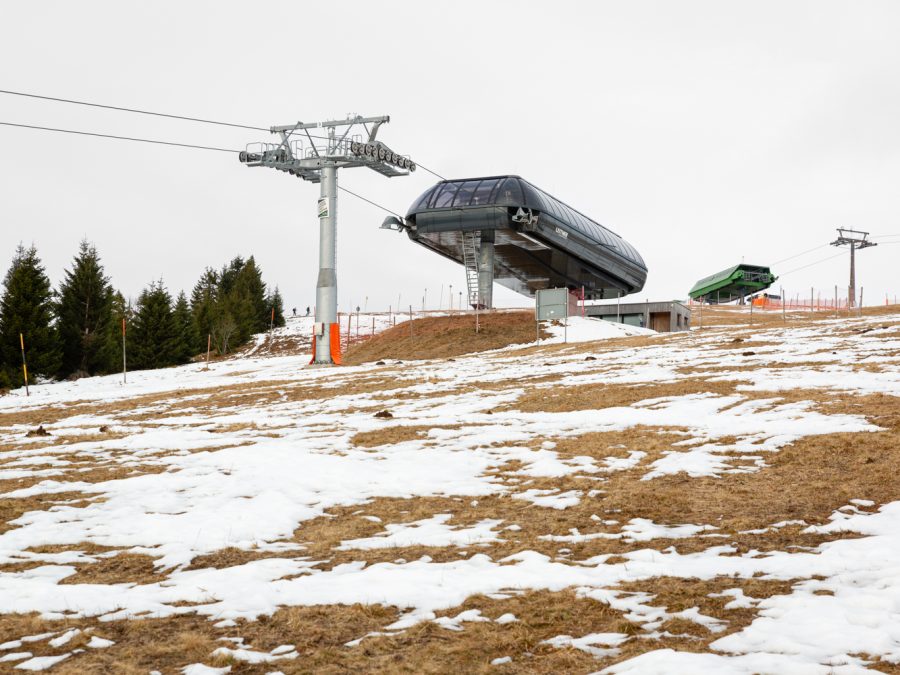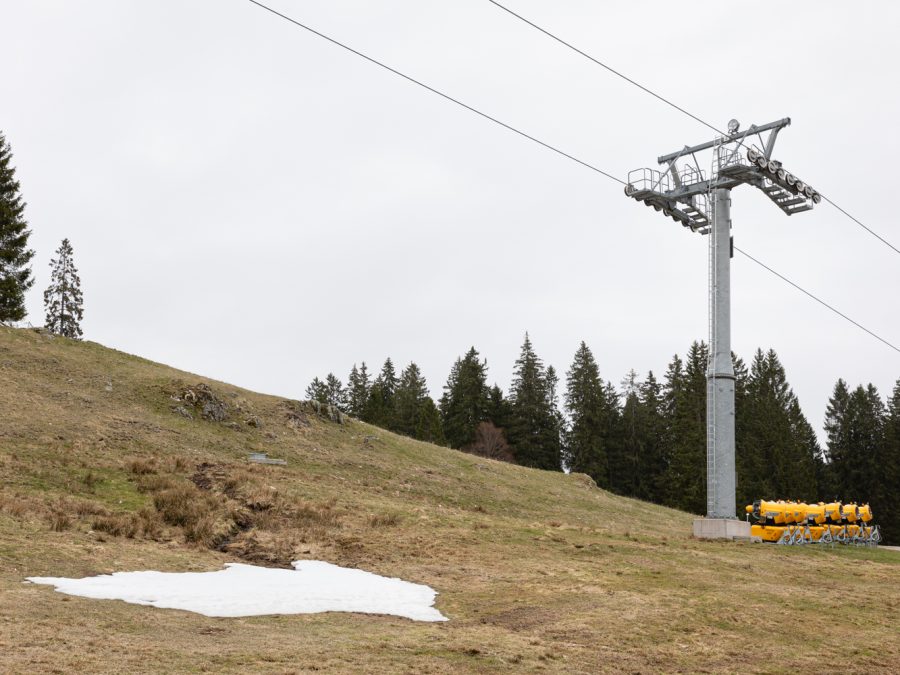Let It Snow
Christina Stohn
2019 – Ongoing — Black Forest, Germany
About this series
At an altitude of nearly 1,500m, the Feldberg is the highest mountain in the Black Forest, located in southwest Germany. In 1908 the world’s first ski lift went into operation in Schollach, powered by a local watermill. The evolution of a winter sports industry altered this region into a large recreational area; tourism has become the main source of revenue. Featuring a subalpine climate and favourable snow conditions, the Feldberg has become a popular destination with a dense network of lifts and slopes.
As a consequence of climate change, rising air temperatures reduce snowfall and lead to earlier melting of snow. For skiing and snowboarding as little as 20cm of snow may be sufficient. Responding to a lack of natural snow, resorts worldwide, as well as in the Black Forest, invest in snowmaking facilities to extend the season. Artificial snow consists only of water and cold air. Chemicals in man-made snow are strictly banned in Germany, as they affect vegetation and soil. Despite technological advances, there is still environmental concern because of the huge energy and water consumption.
Photographer: Christina Stohn
Nationality: German
Based in: Freiburg, Germany
Website: www.christinastohn.com
Instagram: @christinastohn
Christina Stohn trained and worked as a commercial photographer for Gieske Studios, specialising in interior and still life photography. In 2014 she graduated from the University of Westminster with a BA in Photography (First Class Honours). She also completed an MA in Integrated Design (Distinction) which encompassed both photography and book design at the University of the Arts Bremen in 2018.
Christina is based in Freiburg, in southwest Germany. As a freelance photographer, she divides her time between self-initiated projects and working on editorial and commercial assignments. Her personal portfolio focuses on themes of collective identity and specific forms of cultural expression, both in urban and rural environments. Her work has been published and exhibited internationally. As a Visiting Professor, Christina is currently teaching the course ‘Photographing Identity’ at Indiana University in Bloomington, US.









